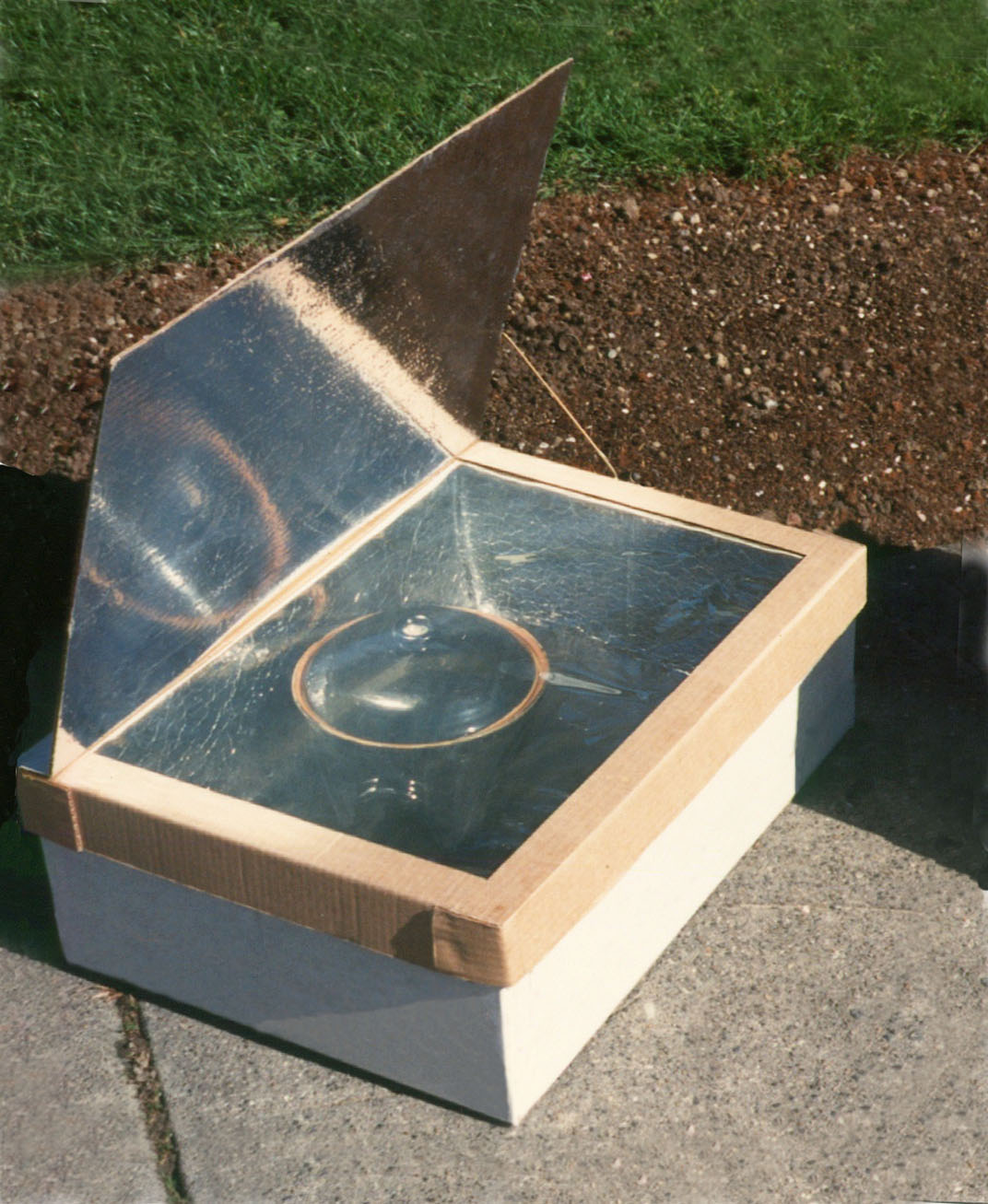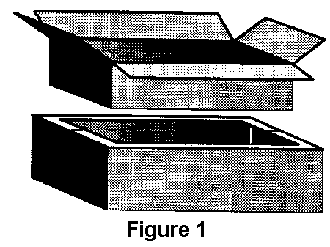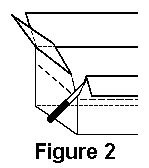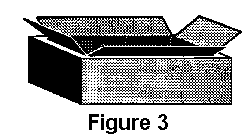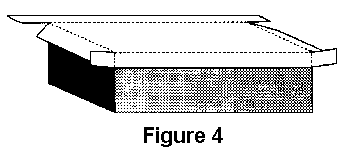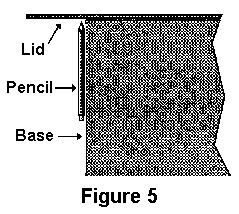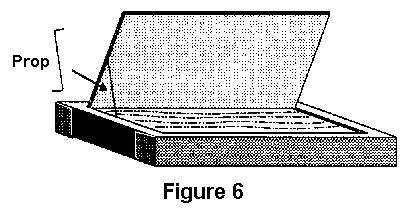The “Minimum” Solar Box Cooker is a simple box cooker that can be built in a few hours for very little money. When this cooker was designed, it was named it the “Minimum Solar Box Cooker” because, at the time, it represented the simplest design we could devise. What we didn’t communicate with that name was that this is a full-power cooker that works very well, and is in no way minimum as far as its cooking power goes.
What You Will Need
– Two cardboard boxes. We would suggest that you use an inner box that is at least 15 inch x 15 inch (38 cm x 38 cm), but bigger is better. The outer box should be larger than the small box all around, but it doesn’t matter how much bigger, as long as there is a half inch (1.5cm) or more of an airspace between the two boxes. The distance between the two boxes does not have to be equal all the way around. Also, keep in mind that it is very easy to adjust the size of a cardboard box by cutting and gluing it.
– One sheet of cardboard to make the lid. This piece must be approximately 2 to 3 inch (4 to 8 cm) larger all the way around than the top of the finished cooker (the outer box).
– One small roll of aluminum foil.
– One can of flat-black spray paint (look for the words “non-toxic when dry”) or one small jar of black tempera paint. Some people have reported making their own paint out of soot mixed with wheat paste.
– At least 8 ounces (250 g) of white glue or wheat paste.
– One Reynolds Oven Cooking Bag ®. These are available in almost all supermarkets in the U.S. and they can be mail-ordered from Solar Cookers International. They are rated for 400 °F (204 °C) so they are perfect for solar cooking. They are not UV-resistant; thus they will become more brittle and opaque over time and may need to be replaced periodically. A sheet of glass can also be used, but this is more expensive and fragile, and doesn’t offer that much better cooking except on windy days.
Building the Base
Fold the top flaps closed on the outer box and set the inner box on top and trace a line around it onto the top of the outer box, Remove the inner box and cut along this line to form a hole in the top of the outer box (Figure 1).
Decide how deep you want your oven to be. It should be about 1 inch (2.5 cm) deeper than your largest pot and about 1″ shorter than the outer box so that there will be a space between the bottoms of the boxes once the cooker is assembled. Using a knife, slit the corners of the inner box down to that height. Fold each side down forming extended flaps (Figure 2). Folding is smoother if you first draw a firm line from the end of one cut to the other where the folds are to go.
Glue aluminum foil to the inside of both boxes and also to the inside of the remaining top flaps of the outer box. Don’t bother being neat on the outer box, since it will never be seen, nor will it experience any wear. The inner box will be visible even after assembly, so if it matters to you, you might want to take more time here. Glue the top flaps closed on the outer box.
Place some wads of crumpled newspaper into the outer box so that when you set the inner box down inside the hole in the outer box, the flaps on the inner box just touch the top of the outer box (Figure 3). Glue these flaps onto the top of the outer box. Trim the excess flap length to be even with the perimeter of the outer box.
Finally, to make the drip pan, cut a piece of cardboard, the same size as the bottom of the interior of the oven and apply foil to one side. Paint this foiled side black and allow it to dry. Put this in the oven so that it rests on the bottom of the inner box (black side up), and place your pots on it when cooking. The base is now finished.
Building the Removable Lid
Take the large sheet of cardboard and lay it on top of the base. Trace its outline and then cut and fold down the edges to form a lip of about 3″ (7.5cm). Fold the corner flaps around and glue to the side lid flaps. (Figure 4). Orient the corrugations so that they go from left to right as you face the oven so that later the prop may be inserted into the corrugations (Figure 6). One trick you can use to make the lid fit well is to lay the pencil or pen against the side of the box when marking (Figure 5). Don’t glue this lid to the box; you’ll need to remove it to move pots in and out of the oven.
To make the reflector flap, draw a line on the lid, forming a rectangle the same size as the oven opening. Cut around three sides and fold the resulting flap up forming the reflector (Figure 6). Foil this flap on the inside.
To make a prop bend a 12″ (30cm) piece of hanger wire as indicated in Figure 6. This can then be inserted into the corrugations as shown.
Next, turn the lid upside-down and glue the oven bag (or other glazing material) in place. We have had great success using the turkey size oven bag (19″ x 23 1/2″, 47.5cm x 58.5cm) applied as is, i.e., without opening it up. This makes a double layer of plastic. The two layers tend to separate from each other to form an airspace as the oven cooks. When using this method, it is important to also glue the bag closed on its open end. This stops water vapor from entering the bag and condensing. Alternately you can cut any size oven bag open to form a flat sheet large enough to cover the oven opening.
Improving Efficiency
The oven you have built should cook fine during most of the solar season. If you would like to improve the efficiency to be able to cook on more marginal days, you can modify your oven in any or all of the following ways:
- Make pieces of foiled cardboard the same size as the oven sides and place these in the wall spaces.
- Make a new reflector the size of the entire lid (see photo above).
- Make the drip pan using sheet metal, such as aluminum flashing. Paint this black and elevate this off the bottom of the oven slightly with small cardboard strips.
Cooking Directions
Put food in dark pots. Use with dark, tight-fitting lids.
Choose a cooking location. Set the cooker on a dry, level surface in direct sunshine away from potential shadows. For best results, solar cooking requires continuous, direct sunshine throughout the cooking period.
Put the pots in the cooker and replace the lid. Put the pots in cooker. If you’re cooking multiple dishes, quicker-cooking items should be placed toward the front of the cooker (opposite the reflector) and slower-cooking items toward the back, where access to sunlight is best. Place the lid on cooker.
Orient the cooker. Orient the cooker according to the details below. Once oriented, the cooker doesn’t need to be moved again during three to four hours of cooking. For longer cooking, or for large quantities of food, reorienting the cooker every couple of hours speeds cooking a little. Food cooks fastest when the shadow created by the cooker is directly behind it.
To cook a noontime meal orient the cooker so that the front side (opposite the reflector) faces easterly, or approximately where the sun will be midmorning. In general, it is good to get the food in early and not worry about it until mealtime. For most dishes you should start cooking by 9 or 10 am.
To cook an evening meal orient the cooker so that the front side faces westerly, or approximately where the sun will be midafternoon. For most dishes, it’s best to start cooking by 1 or 2 pm.
For all-day cooking orient the cooker toward where sun will be at noon or early afternoon. The food will be ready and waiting for the evening meal.
Adjust the reflector. With the adjustable prop, angle the reflector so that maximum sunlight shines on the pots.
Leave the food to cook for several hours or until done. There is no need to stir the food while it is cooking.
Remove the pots. Using pot holders, remove the pots from the cooker. (CAUTION: Pots get very hot.) If you won’t be eating for a couple of hours, you may want to leave the pots in the cooker and close the lid. The insulative properties of the cooker will keep the food warm for a while.
Enjoy!
FAQ’s
- 1 Troubleshooting
- 1.1 Why doesn’t my solar cooker work?
- 1.2 My cooker only gets up to 250 °F (121 °C). Is this hot enough to cook when recipes call for 350 °F (177 °C) or even 450 °F (232 °C)?
- 1.3 Solar cooking usually takes longer than cooking on a conventional stove. Is there any way to speed it up?
- 1.4 What happens if clouds go in front of the sun while I’m cooking?
- 2 Basic information
- 2.1 What are the basic kinds of solar cookers?
- 2.2 Who made the first solar cooker?
- 2.3 Where are solar ovens being used the most?
- 2.4 How hot do solar ovens get?
- 2.5 How long does it take to cook a meal?
- 2.6 Do you have to turn the cooker to follow the sun?
- 2.7 How do I cook in a season when the sun is very low in the sky?
- 2.8 Can you cook pasta in a solar box cooker?
- 2.9 If solar ovens are so good, why isn’t everyone using one?
- 2.10 If you build a box cooker out of cardboard, won’t it catch fire?
- 2.11 How much of the year can you cook?
- 2.12 What foods should I try first in my new Cooker?
- 2.13 Do solar cookers work at high altitudes?
- 2.14 Where can I buy a solar cooker?
- 2.15 I’m planning to do a science project on solar cooking. What should I study?
- 2.16 How are the solar ovens received in developing countries?
- 2.17 Can you cook for large groups with solar cookers?
- 2.18 What are the challenges faced in getting people to change the way they cook?
- 2.19 What’s the future potential for solar ovens in developing countries?
- 2.20 Do you think they could be used in more countries than they are now?
- 2.21 What has to happen for solar ovens to become more widespread?
- 2.22 Where can I find solar cooking recipes
- 2.23 How can people earn money by making and selling solar cookers, when some solar cookers are so easy to make that almost anyone can do it?
- 2.24 What resources are available online?
- 3 Solar cooker components
- 3.1 Should I take the time to build a box cooker out of “real” materials like plywood and glass or is cardboard good enough?
- 3.2 Would a mirror make a better reflector?
- 3.3 Does it help to paint the walls black?
- 3.4 What type of paint should I use?
- 3.5 Is glass better than plastic for the window of a box cooker?
- 3.6 What kind of pots work best?
- 3.7 What is the best insulation to use?
- 3.8 Could I use high-tech materials to make a more efficient solar cooker?
- 4 Other uses
Sources:
http://permaculture-media-download.blogspot.com/

If you've ever found value in our articles, we'd greatly appreciate your support by purchasing Mindful Meditation Techniques for Kids - A Practical Guide for Adults to Empower Kids with the Gift of Inner Peace and Resilience for Life.
In the spirit of mindfulness, we encourage you to choose the paperback version. Delve into its pages away from screen glare and notifications, allowing yourself to fully immerse in the transformative practices within. The physical book enriches the learning process and serves as a tangible commitment to mindfulness, easily shared among family and friends.
Over the past few years, Wake Up World has faced significant online censorship, impacting our financial ability to stay online. Instead of soliciting donations, we're exploring win-win solutions with our readers to remain financially viable. Moving into book publishing, we hope to secure ongoing funds to continue our mission. With over 8,500 articles published in the past 13 years, we are committed to keeping our content free and accessible to everyone, without resorting to a paywall.

